Experiential marketing was born from the premise that telling your audience about your value is not enough; you need to show them. Experiential marketing creates tangible, memorable moments that build lasting brand connections and drive meaningful business outcomes. It’s the difference between sending a spec sheet and letting a prospect feel the power of your product firsthand.
For corporate event marketers, this means crafting activations that not only capture attention but also capture actionable data. Our goal is to design immersive experiences that resonate with a professional audience, encouraging participation that translates directly into leads and ROI. This is where strategic event technology, from AI-powered photo activations to seamless data capture, becomes essential. It is about creating an interactive dialogue with your audience, one that begins at the event and continues long after.
This article breaks down a curated list of high-impact experiential marketing examples, detailing the strategies, execution, and results behind each. We will analyze how these brands moved beyond simple awareness to create powerful, immersive brand experiences. For event professionals looking to elevate their strategy, these case studies offer a blueprint for creating unforgettable moments.
1. Nike's House of Innovation
Nike's House of Innovation represents a groundbreaking shift in retail, transforming stores from simple points of sale into dynamic, immersive brand ecosystems. These flagship locations, like those in New York and Shanghai, merge the physical and digital worlds to create a deeply personalized and convenient shopping journey. It’s a prime example of using technology not for its own sake, but to solve real customer problems and enhance the user experience.
Through the Nike App, shoppers unlock a suite of features: they can scan a QR code on a mannequin to see available sizes and colors, request items be sent directly to a fitting room, or even purchase products instantly without ever waiting in a checkout line. This seamless integration creates a frictionless environment that feels both futuristic and incredibly practical.
Strategic Breakdown
- Hyper-Personalization: The experience is tailored to the individual via the Nike App, which remembers preferences and purchase history to offer relevant product suggestions.
- Utility-Driven Technology: Features like "Scan to Try" and "Shop the Look" address common retail pain points, making the shopping process faster and more efficient.
- Immersive Product Engagement: Dedicated zones like the Nike Sneaker Lab allow customers to see product customization in real-time, creating a memorable and interactive brand moment.
The core strategy is not just to sell products, but to build a direct, data-rich relationship with the consumer, turning each store visit into a valuable brand touchpoint.
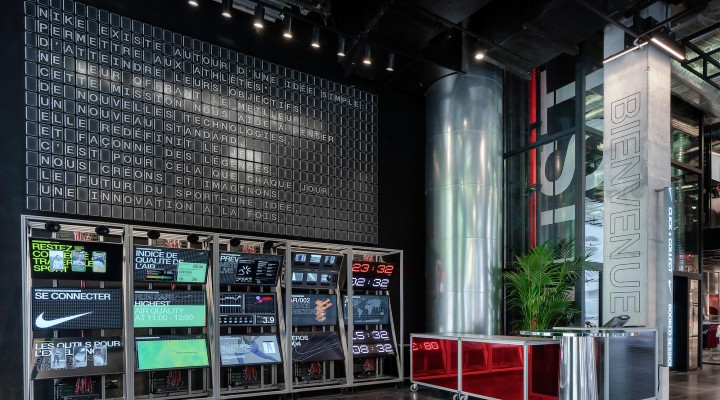
Actionable Takeaways
For brands looking to replicate this success, the focus should be on solving customer needs. Start by identifying friction points in your own customer journey. Could a digital activation simplify a process? An AI-powered photo booth, for instance, could be used not just for social sharing but to let customers virtually "try on" digital versions of new apparel or accessories, blending fun with function. The key is to ensure every technological element serves a clear purpose in making the customer’s experience better.
2. Coca-Cola's Share a Coke Campaign
The "Share a Coke" campaign is a masterclass in turning a mass-produced product into a deeply personal artifact. By replacing its iconic logo with hundreds of popular names, Coca-Cola transformed the simple act of buying a drink into a thrilling hunt for connection. This initiative, first launched in Australia, tapped into a universal human desire to feel seen and recognized, creating a powerful, shareable experience that transcended traditional advertising.
It’s a perfect illustration of how personalization at scale can generate immense organic reach. The campaign encouraged consumers not only to find their own names but also to buy bottles for friends and family, directly embedding the "sharing" concept into the product itself. This simple switch from a corporate brand to a personal name created an immediate emotional bond and an irresistible call to action.
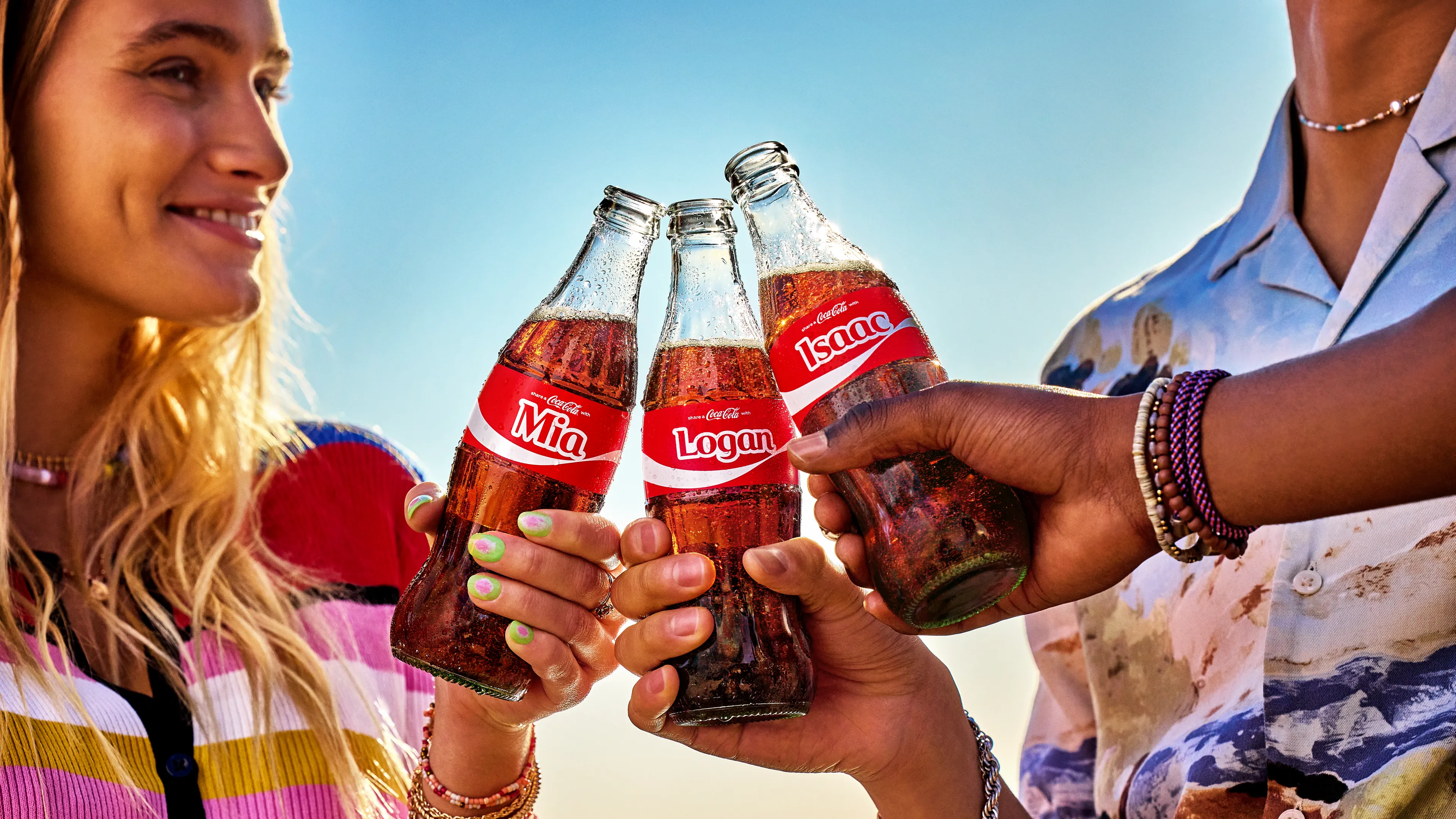
Strategic Breakdown
- Mass Personalization: The campaign brilliantly scaled a personalized experience by researching and printing the most common names for each target region, making millions of people feel individually acknowledged.
- User-Generated Content (UGC) Engine: The bottles were inherently photogenic and shareable. Consumers eagerly posted photos of their named Cokes on social media, creating a massive wave of free, authentic marketing.
- In-Person Product Discovery: "Share a Coke" drove consumers into physical stores, turning a routine shopping trip into an exciting search that generated buzz right at the point of sale.
The core strategy was to make consumers the heroes of the story, transforming a passive product into an active social token that people were excited to find, share, and discuss.
This focus on personal connection and shareability is a key lesson in modern experiential marketing examples, proving that a simple idea can have a profound impact.
Actionable Takeaways
For brands aiming to foster a similar connection, the goal is to make the audience part of the experience. This doesn't require changing your packaging. Instead, you can create interactive digital activations that put attendees at the center. For example, a brand could deploy an AI photo booth at a trade show where attendees generate custom art based on their name or a word that inspires them. This creates a personalized, shareable digital souvenir that directly ties an individual's identity to the brand experience, turning a momentary interaction into a lasting memory.
3. IKEA's Pop-up Experiences
IKEA’s pop-up experiences brilliantly demonstrate how to bring a brand's core value proposition, in this case, accessible and stylish home solutions, directly into the consumer's daily life. Instead of waiting for customers to visit their large, out-of-town stores, IKEA intercepts them in high-traffic urban areas like subway stations and public parks. These immersive installations allow people to physically interact with products in staged, life-like settings, turning a mundane commute into a memorable brand discovery.
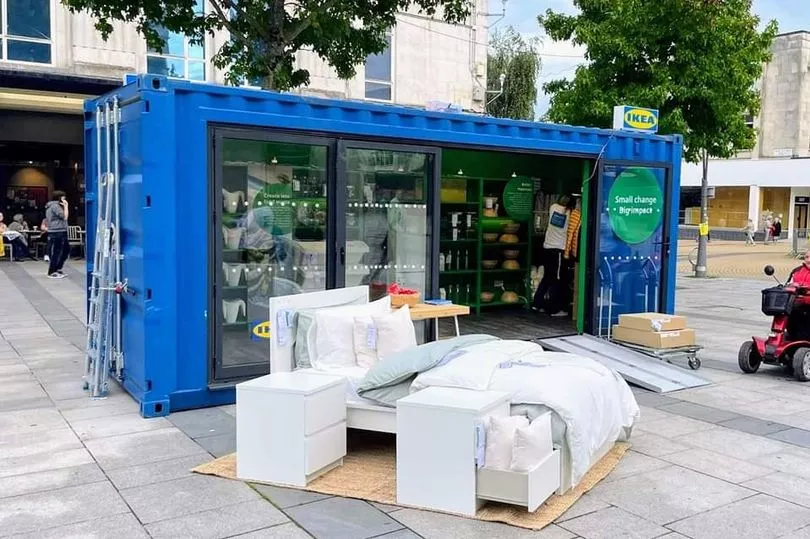
From setting up a complete bedroom in a Paris Metro station to a living room on a busy London street, IKEA makes its brand tangible and relatable. This strategy effectively overcomes the logistical barrier of their typical store locations and generates significant organic social media buzz through its highly "Instagrammable" nature. It is a masterclass in placing the brand experience directly in the path of the target audience.
Strategic Breakdown
- Environmental Immersion: By recreating familiar home environments in unexpected public spaces, IKEA makes its product benefits immediately understandable and desirable.
- Lowering Barriers to Entry: This approach introduces the brand to new audiences who might not undertake a trip to a traditional IKEA warehouse, making product discovery effortless.
- Content Generation Engine: The unique and visually striking nature of these pop-ups encourages user-generated content, turning passersby into brand ambassadors and amplifying reach.
The core strategy is to dismantle the physical and psychological distance between the consumer and the brand, creating delightful, shareable moments that showcase product solutions in a real-world context.
This approach proves that great experiential marketing examples don't always require a permanent footprint.
Actionable Takeaways
Brands can adopt this "meet them where they are" philosophy by identifying high-density locations relevant to their audience. The key is to create an authentic, value-added interaction, not just a static advertisement. For a B2B tech company at a conference, this could mean setting up a "recharge lounge" with their branding and comfortable seating. Integrating a branded AI photo booth where attendees can get professional headshots not only provides a valuable service but also captures lead data and creates a positive brand association that’s easily shareable online.
4. Red Bull's Extreme Sports Events
Red Bull has mastered the art of brand association, transforming its energy drink into a global symbol of adventure, risk, and peak human performance. Instead of traditional advertising, the company built an entire experiential marketing ecosystem around high-octane events like the Red Bull Stratos space jump and the Red Bull Rampage mountain biking competition. These spectacles are not just marketing stunts; they are powerful content-generating engines that define the brand's identity.
By creating and owning these jaw-dropping moments, Red Bull becomes the story, not just a sponsor. This approach builds an authentic connection with its audience, positioning the brand as an enabler of the extraordinary. The events generate immense organic media coverage and user-generated content, creating a self-sustaining cycle of brand promotion that traditional campaigns struggle to match.
Strategic Breakdown
- Brand as Publisher: Red Bull operates more like a media house than a beverage company, creating and distributing world-class content that its audience actively seeks out.
- Authentic Community Building: Events like Red Bull Crashed Ice are deeply embedded in niche sports cultures, earning credibility and fostering a loyal community around shared passions.
- High-Impact Storytelling: Focusing on incredible human feats, such as Felix Baumgartner's record-breaking freefall, creates powerful, emotional narratives that resonate on a global scale.
The core strategy is to embody the brand's promise—"gives you wings"—by creating, facilitating, and broadcasting moments of extreme human achievement, making the brand inseparable from the experience itself.
This legendary jump demonstrates the sheer scale and ambition of Red Bull’s experiential strategy.
Actionable Takeaways
You don't need a stratospheric budget to replicate Red Bull's success; the principle is scalable. Focus on creating an authentic experience that aligns with your brand's core values. Instead of sponsoring a local 5K, consider creating a unique corporate challenge or a branded obstacle course that embodies your company’s spirit of innovation or perseverance. The goal is to own an experience, not just attach your logo to it. You can draw a crowd at your tradeshow booth by hosting a mini-competition with a leaderboard, turning passive attendees into active participants and creating a memorable brand moment.
5. Spotify's Personalized Data Experiences
Spotify masterfully transforms individual user data into a global, shared cultural moment. By leveraging its vast repository of listening habits, the platform creates highly personalized, visually engaging summaries that turn passive consumption into an active, celebrated experience. Campaigns like the annual "Wrapped" are brilliant examples of digital experiential marketing that make users the star of their own brand story, fostering a deep sense of personal connection and community.
This approach gamifies personal analytics, presenting data not as cold numbers but as a reflection of a user's identity, moods, and year. The experience is designed for maximum shareability on social media, turning every user into a brand ambassador. From "Wrapped" to features like "Blend" which creates shared playlists with friends, Spotify consistently turns data into a catalyst for human connection and platform loyalty.
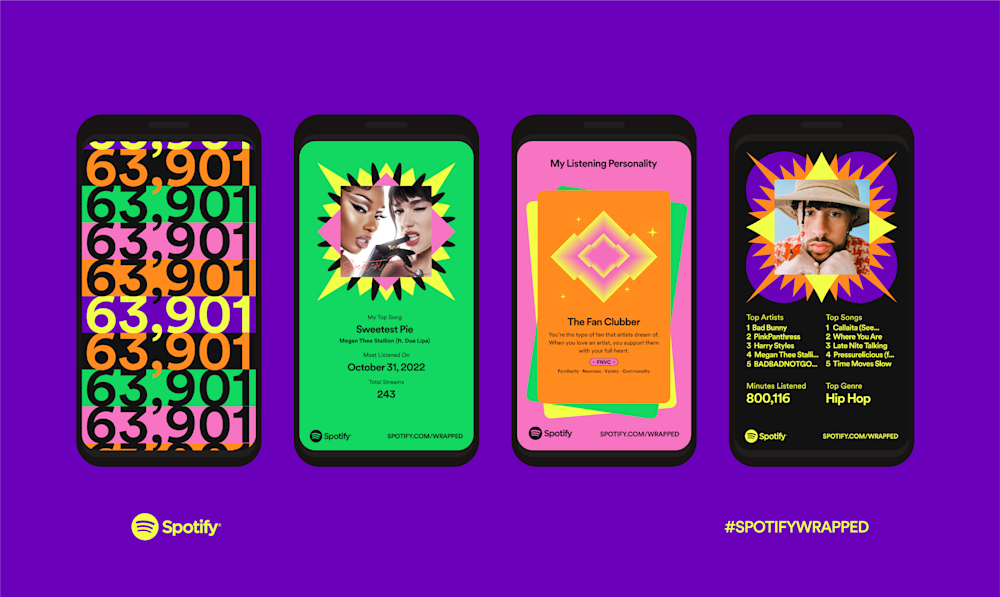
Strategic Breakdown
- Data as a Mirror: The experience holds up a mirror to the user, reflecting their unique tastes and making them feel seen and understood by the brand.
- Frictionless Social Sharing: The entire experience is optimized for sharing. Spotify generates eye-catching, pre-formatted graphics that are easy to post, fueling organic word-of-mouth marketing.
- Creating FOMO (Fear of Missing Out): As social feeds flood with Wrapped stories, non-users are incentivized to join the platform to be part of the next year's cultural conversation.
The core strategy is to weaponize personal data for delight, transforming a utility service into a powerful engine for identity-expression and community-building.
This strategy showcases how data-driven personalization can be one of the most effective experiential marketing examples available to digital brands.
Actionable Takeaways
Brands can apply this principle by turning customer data into a rewarding experience. Think beyond purchase history. A brand could use an AI-powered photo booth at a conference to capture attendee headshots, then later send a personalized follow-up email featuring their photo alongside analytics about their session attendance, creating a "Your Year in Learning" summary. The key is to present data in a positive, celebratory, and shareable format that adds value to the customer relationship rather than just extracting it.
6. Airbnb's Belong Anywhere Experiences
Airbnb fundamentally shifted the travel industry by transforming accommodation from a simple transaction into an immersive cultural experience. Its "Belong Anywhere" philosophy is a masterclass in experiential marketing, moving beyond just offering a place to stay to providing unique, host-led activities that foster genuine local connection. From exclusive "Night At" contests in locations like the Louvre to intimate cooking classes and art workshops, Airbnb makes travel a story worth telling.
This approach creates a powerful emotional bond between the user and the brand. By facilitating authentic moments, such as staying in a unique treehouse or learning a new skill from a local artisan, Airbnb turns customers into brand evangelists. The experience becomes the product, and user-generated content from these memorable trips fuels a continuous marketing cycle built on trust and authenticity.
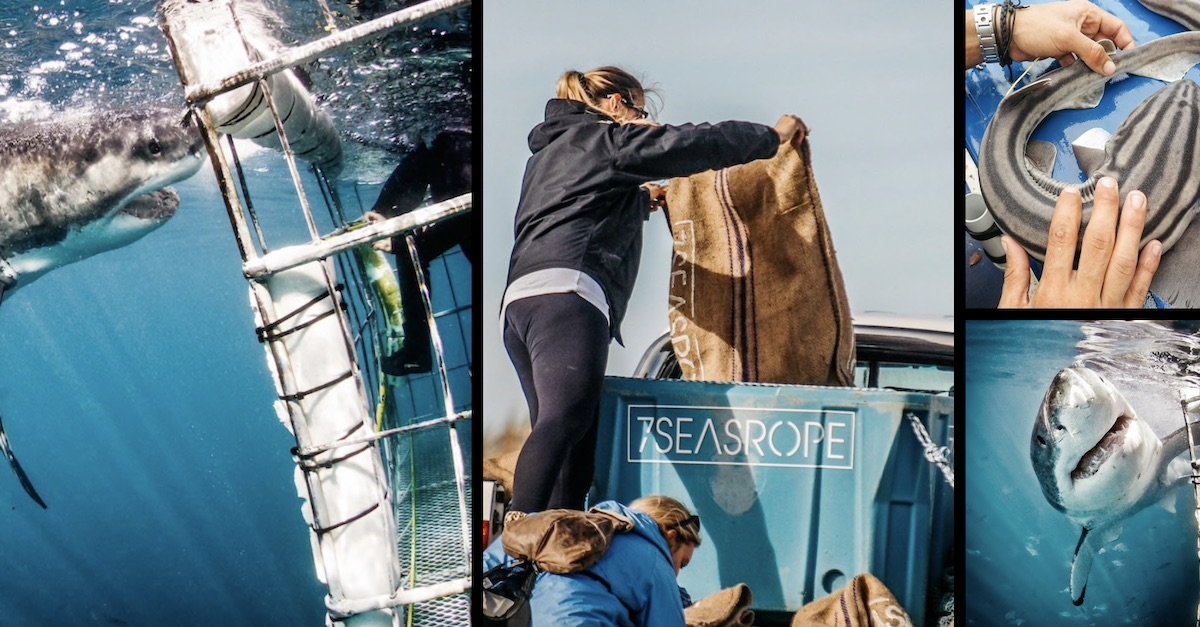
Strategic Breakdown
- Community and Connection: The core of the strategy is enabling human connection. Experiences are designed to bring people together, creating a sense of community that transcends a typical tourist interaction.
- Authentic Storytelling: By empowering local hosts to share their passions and culture, Airbnb facilitates authentic stories that are far more compelling than traditional advertising.
- User-Generated Content as a Flywheel: Every unique stay and experience is a photo opportunity. This encourages a massive volume of organic social sharing, which serves as powerful, trusted marketing for the platform.
The strategy is to sell not just a service, but a feeling of belonging. By curating unique, localized experiences, Airbnb embeds its brand directly into the traveler's personal journey and memories.
This focus on authentic engagement is central to modern brand activations. For more insights on blending digital and physical elements to create memorable moments, you can learn more about experiential marketing ideas and strategy in a hybrid world.
Actionable Takeaways
For brands aiming to build a similar sense of community, focus on facilitating authentic interactions. Identify what makes your brand's community special and create a platform for them to share it. For a corporate conference, this could mean moving beyond standard networking mixers. Instead, organize small-group workshops led by industry experts or create a "story-sharing" activation where attendees can record short videos about their professional breakthroughs. A video testimonial booth is a great way to capture these narratives, turning attendee experiences into powerful content assets that showcase the value of your event.
7. Sephora's Beauty Studio Interactive Experience
Sephora has masterfully redefined beauty retail by integrating technology not as a gimmick, but as a core component of the customer journey. Its Beauty Studio and in-app experiences transform stores and mobile devices into personalized beauty playgrounds. This approach brilliantly blends education, entertainment, and utility, creating a memorable and empowering shopping experience that other brands can learn from.
Key to this strategy is the use of augmented reality and AI. The Virtual Artist feature allows customers to "try on" thousands of lipstick shades or eyeshadows from their phone, removing purchase anxiety. In-store, Color IQ technology scans a customer's skin to find their scientifically precise foundation match from a vast product range. These tools solve genuine consumer problems, making beauty more accessible and less intimidating.
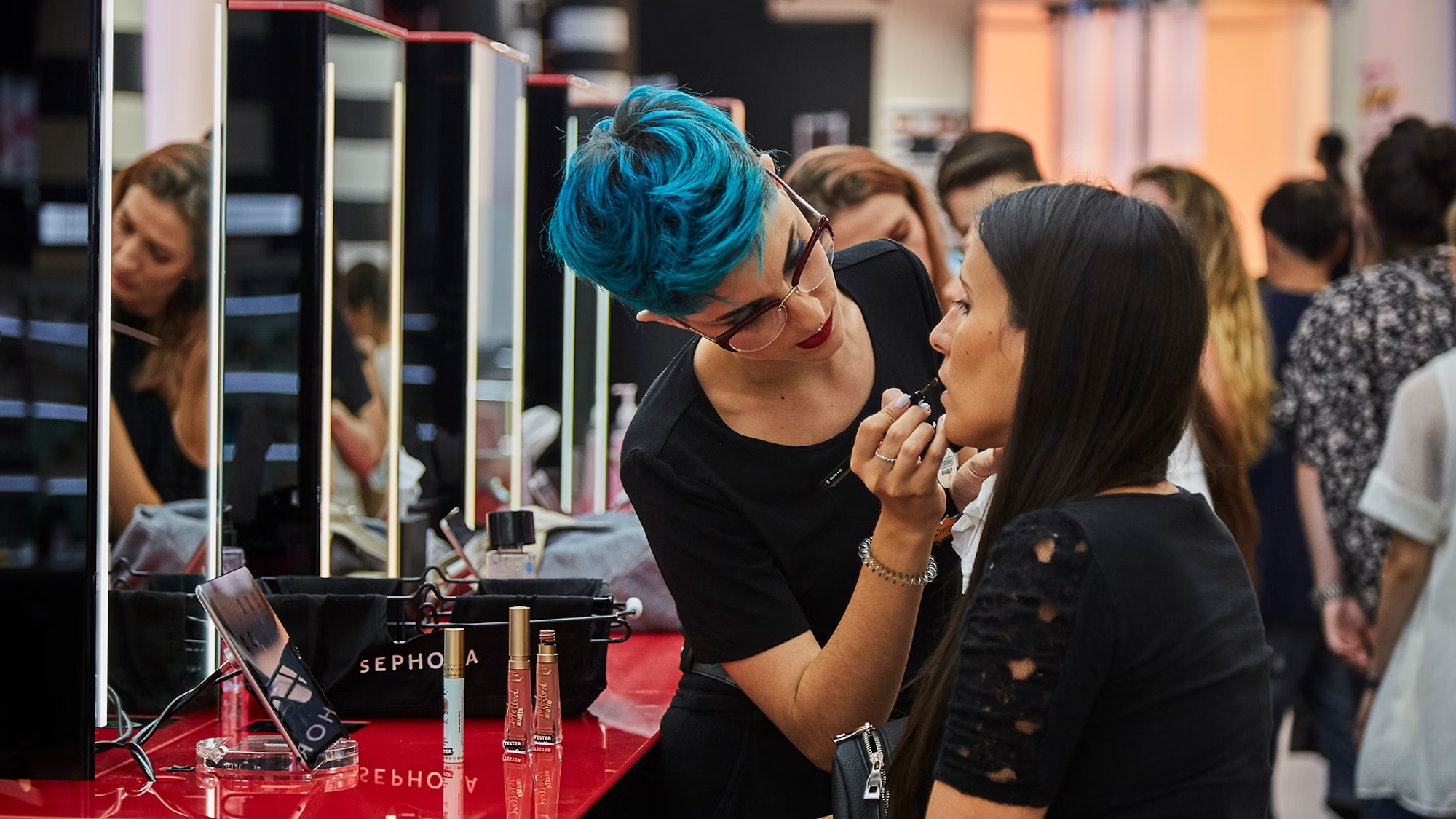
Strategic Breakdown
- Technology as a Problem-Solver: Sephora uses AR and AI to address common customer pain points like finding the right shade or experimenting with new looks without commitment.
- Seamless Omni-Channel Integration: The experience flows effortlessly between the mobile app and the physical store. A look a customer tries on virtually at home can be easily located and tested in person.
- Education and Empowerment: The Beauty Studio isn't just for selling; it's for teaching. On-site experts and digital tools work together to empower customers with knowledge and confidence in their choices.
The core strategy is to use technology to demystify beauty, offering personalized solutions and fostering a community built on discovery and self-expression.
This blend of high-tech and high-touch service creates an unparalleled retail environment, making Sephora a standout in experiential marketing examples.
Actionable Takeaways
For brands in any industry, the lesson is to use technology to enhance human expertise, not replace it. Identify a common customer challenge: maybe it’s visualizing a product in their space or choosing the right configuration. An interactive activation, like an AI-powered photo booth, could allow customers to superimpose your product into their photo, creating a shareable, personalized visualization. The goal is to provide a tool that adds real value, making the decision-making process easier and more engaging.
8. Mercedes-Benz's Immersive Brand Experiences
Mercedes-Benz elevates experiential marketing by creating sophisticated, high-touch events that go far beyond a simple vehicle display. Instead of just showing their cars, they build entire environments that embody the brand's core values of luxury, innovation, and performance. Activations like pop-up showcases in luxury shopping districts, extended test drive programs paired with premium hospitality, and sponsorships of high-culture events like Fashion Week allow consumers to live the brand, not just observe it.
These curated experiences reinforce the brand's premium positioning by aligning it with aspirational lifestyles and settings. By allowing potential customers to engage with their innovative technology, like the MBUX infotainment system or their EQ electric vehicle line, in a relaxed and memorable context, Mercedes-Benz transforms a product demonstration into a powerful brand statement. It’s a masterclass in making a brand tangible.
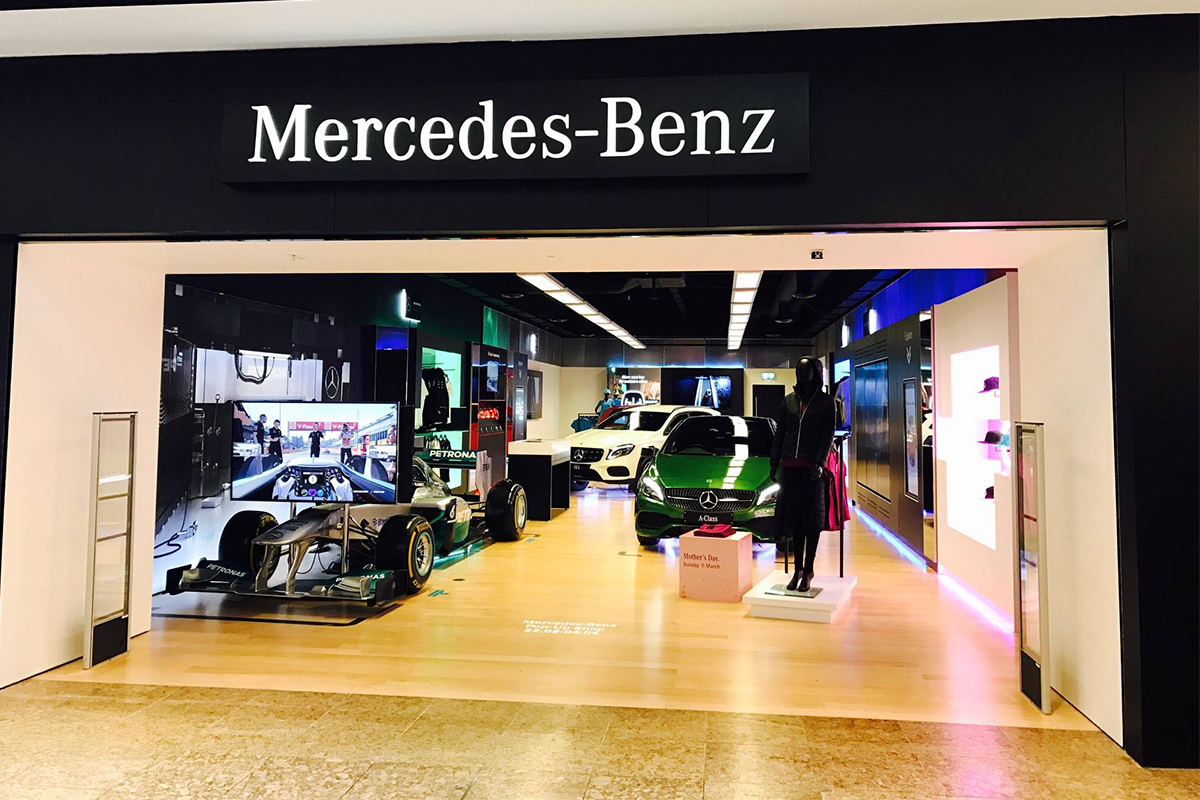
Strategic Breakdown
- Lifestyle Alignment: Events are strategically placed within contexts like fashion, art, and luxury travel to authentically connect the brand with the target audience's interests and values.
- High-Value Engagement: Offering extended, multi-day test drives or exclusive access at sponsored events provides a deeper, more meaningful interaction than a typical 15-minute spin around the block.
- Sensory Immersion: Every detail, from the venue's architecture to the curated music and refreshments, is designed to create a multisensory experience that reflects the brand’s commitment to quality and craftsmanship.
The strategy is to embed the brand within the customer’s world, making a Mercedes-Benz feel less like a purchase and more like a natural extension of their lifestyle.
This approach creates an emotional connection that transcends product features, fostering long-term brand loyalty.
Actionable Takeaways
For brands aiming for a premium feel, the key is to ensure every touchpoint reflects that positioning. It’s about quality over quantity. Instead of a standard trade show booth, consider creating an exclusive lounge for key clients. A great way to enhance this exclusivity is by using an AI-powered photo booth to create high-end, branded portraits that attendees can instantly share. This not only provides a valuable, personalized takeaway but also captures user data for future relationship-building, seamlessly integrating a fun activation with a strategic business goal.
9. Starbucks' Community-Centered Experiences
Starbucks masterfully executes experiential marketing by positioning its stores as the "third place"—a vital community hub between home and work. Instead of focusing solely on transactions, the brand builds deep, emotional connections through shared values, seasonal campaigns, and hyper-local initiatives. This strategy transforms a simple coffee run into a meaningful, community-centric experience that fosters powerful brand loyalty.
From the annual excitement surrounding its holiday cups to partnerships with local non-profits, Starbucks consistently weaves its brand into the fabric of daily life. These initiatives make customers feel like part of a larger community, creating a sense of belonging that transcends the product itself. It’s a prime example of building a brand that stands for something more than just coffee.
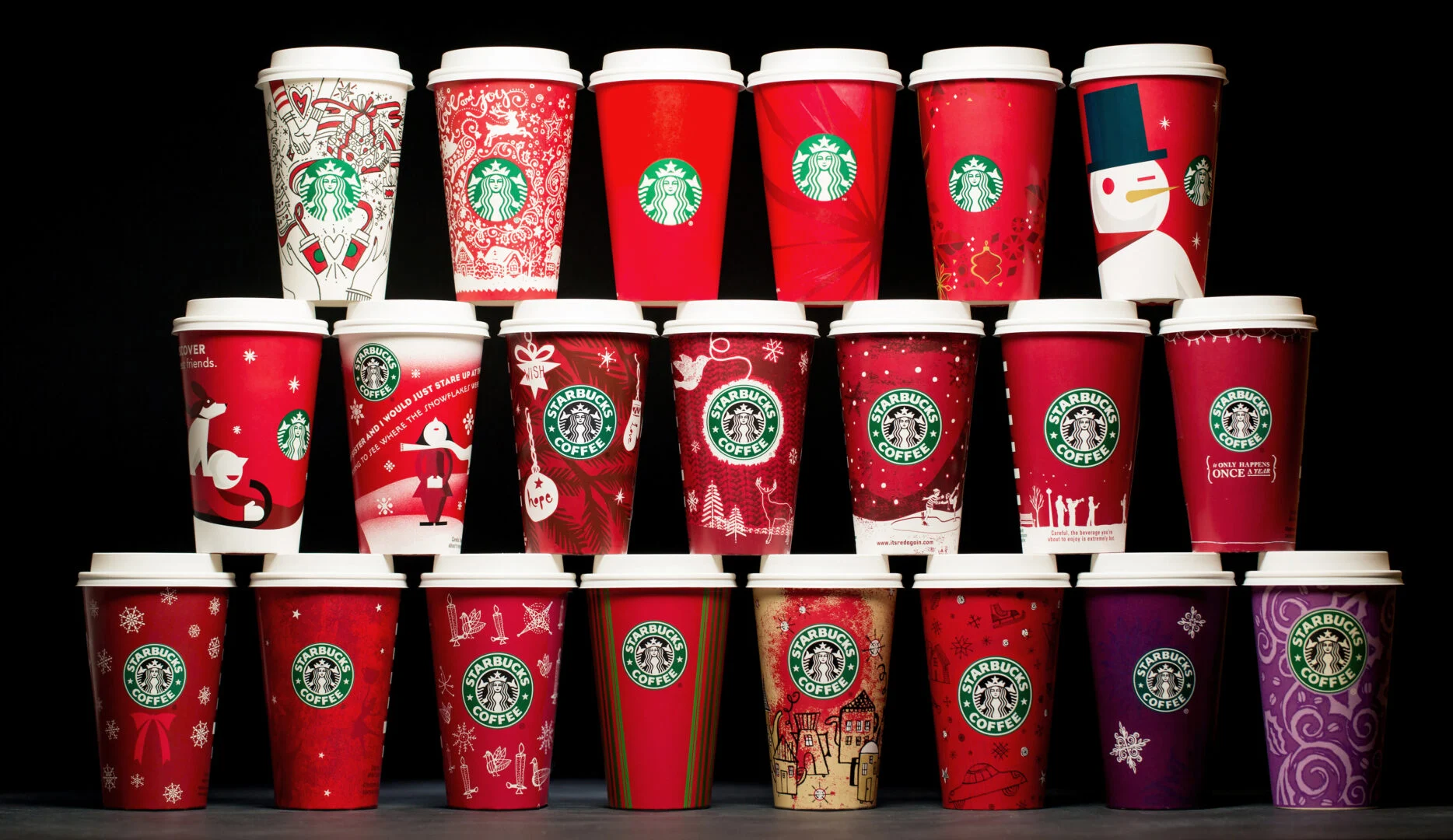
Strategic Breakdown
- Cultivating Community: Starbucks actively partners with local organizations and empowers employees (or "partners") to create genuine, personal connections with customers, making each location feel unique and community-owned.
- Seasonal Rituals: The launch of seasonal menus and iconic red holiday cups creates a sense of anticipation and shared tradition, turning a simple purchase into a celebrated cultural moment.
- Values-Driven Engagement: By highlighting its commitment to social impact and community service, Starbucks aligns its brand with customer values, building loyalty based on mutual respect and shared purpose.
The core strategy is to embed the brand within the community's daily rituals and values, making Starbucks an indispensable part of the customer's life, not just their morning routine.
This approach creates a powerful, self-perpetuating cycle of engagement. To explore this further, explore our community-centered digital photo experiences.
Actionable Takeaways
For brands aiming to build a similar sense of community, the key is authenticity. Start by identifying shared values between your brand and your audience. A simple yet effective activation could involve using a photo booth at a sponsored community event, where each photo shared triggers a donation to a local charity. This blends a fun, shareable moment with tangible social impact, reinforcing your brand's commitment to the community while creating positive, user-generated content.
Turning Inspiration into Action
From Nike's personalized retail innovations to Red Bull's adrenaline-fueled brand ecosystem, the experiential marketing examples we've explored share a powerful common denominator. They prioritize genuine human connection over simple transactions. They prove that the most effective marketing doesn't just tell an audience about a brand; it invites them to become part of the brand's story.
The core lesson for event professionals, brand managers, and corporate planners is that immersion, interaction, and emotional resonance are the new currencies of brand loyalty. Simply presenting a product or service is no longer enough. Audiences, whether B2C or B2B, expect to be engaged, to participate, and to walk away with a memorable, personalized moment.
From Big Ideas to Tangible ROI
The strategic thread connecting these diverse campaigns is a deep, empathetic understanding of the target audience combined with a commitment to delivering authentic value. For B2B marketers specifically, the takeaway is clear: your audience of decision-makers and professionals craves more than another sales pitch. They want to interact with your solutions, learn from your experts, and feel a tangible connection to your brand's mission.
This is where inspiration transforms into measurable results. Modern event technology acts as the bridge between a brilliant creative concept and quantifiable business outcomes.
Strategic Insight: The goal of modern experiential marketing is not just to create a moment of "wow," but to build a lasting feedback loop. Each interaction should be an opportunity to learn about your audience, capture valuable data, and personalize future engagement.
Your Next Steps in Experiential Activation
As we plan our next conference, trade show booth, or corporate event, we shift our focus from passive presentation to active participation. Instead of only thinking about what we want to say, we consider what we want our audience to do, feel, and share.
Here are actionable steps to translate these examples into your own strategy:
- Map the Attendee Journey: Before designing the activation, chart the entire attendee experience from invitation to post-event follow-up. Identify key touchpoints where you can introduce an interactive, value-added element.
- Integrate Smart Technology: Don't view technology as a gimmick. See it as a tool for connection and data capture. An AI-powered photo booth, for instance, isn't just a fun activity; it's a sophisticated lead-capture mechanism, a content generation engine, and a vehicle for personalized, immediate follow-up.
- Empower User-Generated Content (UGC): Encourage attendees to become your brand storytellers. A dynamic UGC display or a branded virtual event microsite transforms passive viewers into active brand advocates, amplifying your message far beyond the event floor.
- Focus on Shareable Moments: Design activations that are inherently shareable. The visual and emotional appeal should be strong enough that attendees feel compelled to post about their experience, organically extending your brand's reach.
The most successful brands today are not just sellers; they are conveners of communities. By crafting experiences that empower your audience, capture their unique insights, and give them a tangible memory of your brand, you are not just creating a moment. You are building marketing that drives relationships, fosters loyalty, and delivers a powerful return on investment.










-p-500.webp)



.jpeg)















